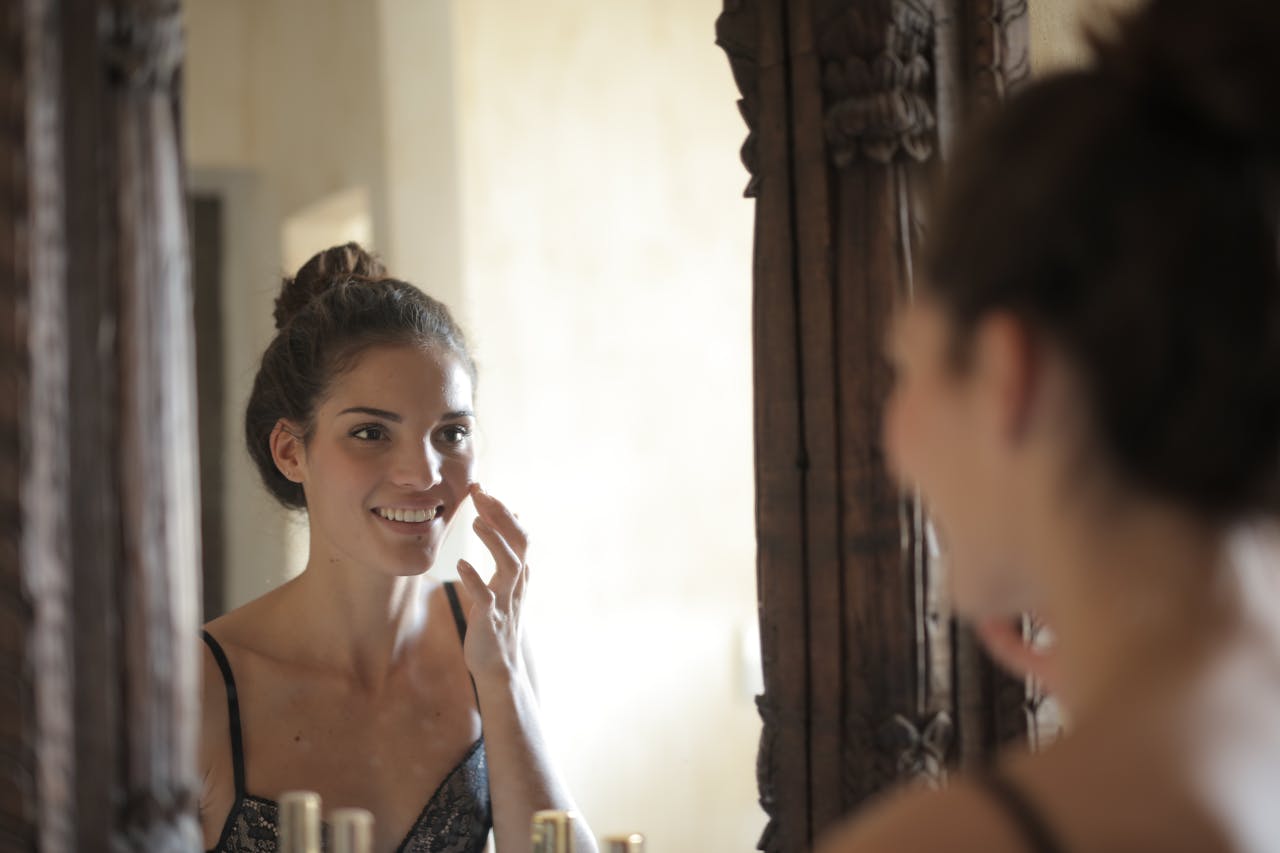Your face is the first thing the world sees. Whether you’re dealing with breakouts, dryness, dullness, or just looking to maintain a healthy glow, having a dedicated facial skincare routine can make all the difference. But with so many products and routines out there, it’s easy to feel overwhelmed.
This article breaks down a simple, science-backed, 7-step face skincare routine—plus the why behind each step—so you can build a regimen that truly works for your skin type and lifestyle.
Why Face Skincare Matters
Facial skin is thinner, more delicate, and more exposed to environmental damage than other parts of your body. Pollution, UV rays, blue light from screens, and even stress can affect your face’s appearance and health. Investing time in your facial skincare is not just about beauty—it’s about skin health.
When you treat your face with care, you support your skin’s natural barrier, improve texture, reduce the signs of aging, and boost confidence. And the best part? You don’t need a cabinet full of products—just the right ones.
Step 1: Cleansing – Start with a Clean Canvas
Cleansing your face is the foundation of every skincare routine. It removes dirt, oil, sweat, makeup, and environmental pollutants that accumulate on your skin during the day or night.
How to Cleanse Properly:
- Use a gentle cleanser suited to your skin type (gel for oily, cream for dry, micellar water for sensitive).
- Avoid harsh soaps that strip the skin.
- Cleanse once in the morning and twice at night (double cleanse if you wear makeup or sunscreen).
Tip:
Massage your cleanser in for at least 30 seconds using upward, circular motions—don’t rush it!
Step 2: Exfoliate – Reveal Fresh Skin (2–3 Times a Week)
Exfoliation helps remove dead skin cells that make your face look dull and can clog pores. It also allows your serums and moisturizers to penetrate deeper.
Two Types of Exfoliants:
- Physical exfoliants: Scrubs with fine particles (use with caution—avoid rough grains like walnut shell).
- Chemical exfoliants: AHAs (like glycolic or lactic acid) and BHAs (like salicylic acid) that work deeper and more evenly.
Tip:
Don’t overdo it. Over-exfoliation can damage your skin barrier and cause irritation.
Step 3: Toner – Balance and Prep
A toner helps balance your skin’s pH after cleansing and prepares it for better absorption of treatments. It also refreshes the skin and can target concerns like oiliness or dryness.
Best Toners for Each Skin Type:
- Oily skin: Witch hazel or salicylic acid-based toner.
- Dry skin: Hydrating toners with hyaluronic acid or rose water.
- Sensitive skin: Alcohol-free, fragrance-free calming toners.
Tip:
Pat toner in with your hands or apply with a cotton pad—just don’t rub too hard.
Step 4: Serum – Targeted Treatment
Serums are lightweight but powerful formulations designed to target specific skin concerns, such as dark spots, fine lines, acne, or dehydration.
Most Popular Serums:
- Vitamin C: Brightens and evens skin tone.
- Hyaluronic Acid: Hydrates deeply and plumps skin.
- Niacinamide: Reduces redness and controls oil.
- Retinol: Stimulates collagen and smooths wrinkles.
Tip:
Use a pea-sized amount and gently press into your skin. Apply in order of thinnest to thickest products.
Step 5: Eye Cream – Treat the Delicate Zone
The skin around your eyes is the thinnest and most prone to signs of aging, dryness, and puffiness. Eye creams are specially formulated to be gentle yet effective.
Choose Based on Concern:
- Dark circles: Vitamin C, caffeine, or peptides.
- Puffiness: Cooling ingredients like cucumber or aloe.
- Fine lines: Retinol or hyaluronic acid-based eye creams.
Tip:
Use your ring finger (the weakest) to gently tap product under your eyes. Don’t rub or tug.
Step 6: Moisturizer – Seal and Hydrate
A moisturizer locks in all the previous steps and strengthens the skin barrier. Even oily or acne-prone skin needs moisture—just choose the right formulation.
Moisturizer Types:
- Gel: Best for oily and acne-prone skin.
- Lotion or cream: Ideal for dry or mature skin.
- Balms: Ultra-rich formulas for very dry or sensitive skin.
Tip:
Apply moisturizer while your skin is still slightly damp to maximize hydration.
Step 7: Sunscreen – Your Skin’s Daily Armor
If you do only one thing for your face, let it be sunscreen. UV rays are the #1 cause of premature aging, pigmentation, and skin cancer.
Key Rules:
- Use a broad-spectrum SPF 30 or higher daily.
- Reapply every two hours when outside.
- Don’t forget areas like ears, neck, and hairline.
Tip:
For a glowing, makeup-friendly finish, try a sunscreen that doubles as a primer.
Bonus Tips for a Healthy Face Glow
1. Don’t Sleep with Makeup On
No matter how tired you are, cleanse your face before bed. Sleeping in makeup clogs pores and accelerates aging.
2. Wash Pillowcases Regularly
Oil, sweat, and bacteria collect on pillowcases. Wash them 1–2 times per week.
3. Stay Hydrated and Eat Clean
Your skin reflects your internal health. Drink plenty of water and eat antioxidant-rich foods like berries, leafy greens, and omega-3s.
4. Manage Stress
Chronic stress can lead to breakouts, dullness, and inflammation. Try journaling, meditation, or regular walks.
5. Be Consistent
It takes 4–6 weeks to see results from a new skincare routine. Don’t give up too soon—consistency pays off.
Final Thoughts: Love the Skin You’re In
Healthy, radiant skin doesn’t come from expensive products or overnight miracles. It comes from understanding your skin’s needs, following a consistent routine, and giving your face the care and kindness it deserves.
You don’t have to follow every trend or own every product. Start simple, be patient, and enjoy the process. Your face tells your story—make it a glowing one.

